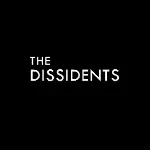
The two distinct color schemes and themes of Alien and Aliens
ALIEN
In the vast expanse of deep space, an all-encompassing darkness prevails. Only the faint silhouette of a planetary ring breaks the blackness. The film’s title—five stark white letters spelling "ALIEN"—is etched onto the screen with deliberate precision.
Inside the Nostromo spacecraft, deserted corridors and rooms lie in shadows. Tracking shots guide us slowly and silently through the ship. We pass sporadic indicator lights, rustling debris, pages lifted by air currents, and the sudden flicker of computer screens. Eventually, we reach a brightly lit chamber where the cryosleep pods begin to gently open. They sleep in darkness and are awakened by light.
Alien (1979) establishes its visual tone through this meeting of black and white. But rather than reminding audiences of the contrasts used in expressionism, this juxtaposition reflects modern materials—metal alloys, plastic, and silicone. These synthetic elements shape the film’s spatial stage and amplify the suffocating silence that permeates it. As the famous tagline suggests: “In space, no one can hear you scream.” The long, humid corridors echo with a low hum, while the white, sound-absorbing walls evoke a sinister quietness.

The creature born from this silence is entirely made of artificial materials too. The Xenomorph-121, with its silicon-based skull and metallic teeth, is labeled as an alien with a Lovecraftian origin. However, it is unmistakably a product of human industrial civilization. By the film’s end, when the alien hides in a corner of Ripley’s escape shuttle, its body blends seamlessly with the surrounding pipes and wires.
The film also introduces another man-made creation: a cold, calculating android, which represents a different kind of malevolence—one that parallels the pure predator it admires. It embodies the ruthless logic of capitalism, with its Darwinian obsession with the “perfect organism”. Yet, just as the android's internal circuitry is filled with unseemly white fluid, the Xenomorph’s sleek black design occasionally reveals a plastic-like, almost comical quality due to the limitations of its costume design. Despite the film’s best efforts to conceal these imperfections, a few close-ups reveal that the creature’s front limbs are unable to bend properly. Even its drooling before a kill makes it resemble a malfunctioning, leaky machine.
These flaws in artificial creations are laid bare, but rather than detracting from the film, they enhance its gritty realism. This is a world of worn work uniforms, leaky storage rooms, flickering lights, and acid-corroded surfaces. Ridley Scott’s later exploration of cyberpunk aesthetics, as seen in Blade Runner, was already beginning to take shape here.

If 2001: A Space Odyssey used stark black-and-white contrasts to symbolize evolutionary enlightenment—structured by orderly lines, smooth surfaces, and symmetrical geometries (such as the pristine, circular space station rotating in the cosmic void or the monolithic black slab standing in a pure white, neoclassical room)—then Alien, as its inspired successor (Scott dreamed of making a sci-fi film after watching 2001), takes pride in its bold, curved lines. However, the ship’s curved corridors and arched rooms are never perfectly smooth. As the camera glides along with the characters in half-lit scenes, the industrial design’s sleek lines are marred by subtle signs of wear and tear, shown through ‘friction’ in the cinematography—cameras loaded on bumpy dolly tracks, uneven camera speeds, and hesitant pans. These small imperfections reveal the constructed, artificial nature of the film’s mise-en-scène.

ALIENS
Above a deep blue nebula, the Narcissus shuttle drifts, abandoned for years, before being intercepted by a nearby ship. The hatch is cut open from the outside, and thick smoke billows into the dimly lit cabin. A mechanical arm reaches in, scanning the interior with a blue laser. As the search crew wipes away the crystalline dust from the cryosleep pod, the face of the lone survivor, Ripley, appears. Her image fades into that of a blue planet. This prologue to Aliens (1986), connecting the first and second films, revolves around the motif of ‘blue’.

James Cameron, known for enhancing sequels (as hinted by the shift from the white ALIEN to the blue ALIENS), expands on the blue hues that were mere accents in Alien, turning them into the dominant light source in Aliens. Indoors, the warship's living quarters and deck are bathed in cold, pale blue light. The colonial base and atmospheric processing plant are drenched in intense, saturated blue. Outdoors, the stormy skies and night rain on the planet’s surface are also cast in shades of blue.
Beyond these blue tones used for visual impact, there exists a more “diegetic” blue—the light from cathode-ray screens, which proliferate throughout the film: motion detectors, map projections, surveillance arrays, soldier feeds, elevator indicators, and malfunctioning monitors all emit this blue glow. In the visual lexicon of futurist science fiction, blue symbolizes technology. Cameron’s affinity for blue is far from incidental; it’s a recurring signature in his work. His films often feature two kinds of blue: one tied to the organic (the ocean, Pandora, the Na’vi), and the other to the mechanical (Titanic, factories, Skynet, the Terminators).

The blue in Aliens clearly falls into the latter category. Early in the film, tracking shots that mirror those in the original Alien show rows of guns, missiles, dropships, and cargo loaders on the warship’s deck, ready for battle. If Aliens inherits a fetishism for machinery from its predecessor, the difference lies in emphasis. Ridley Scott focused on the appearance and texture of machines, while Cameron fixates on their function, particularly automation and weaponization. This difference is seen in how the two films reveal their androids: in Alien, Ash is disemboweled, exposing his synthetic workings; in Aliens, Bishop demonstrates superhuman speed and precision, showcasing the power of machines.
In Aliens, machines are no longer vessels of unknown terror, but carriers of power that provoke direct confrontation. This confrontation escalates beyond individual hunts, evolving into full-scale military conflict. The pluralized title, “Aliens”, signals this shift, transforming the singular alien threat into an army of hive-like creatures. Their real-world analog shifts from a single apex predator to a swarm of insects, with their metaphor shifting from reproduction to colonization and the Vietnam War. Their nest, bathed in blue, functions as their factory, and the war machines they produce are themselves.
Thus, the analogy between aliens and machines gains a new dimension. No longer are machines fragile or malfunctioning; they are weapons, akin to the Terminators of the eponymous series. The alien’s inner jaws resemble hydraulically powered weapons. When an alien lurks in ambush, it mirrors the automated sentry guns the humans use to defend their base. The film’s climax presents the ultimate parallel: when Ripley dons a power loader to face off against the alien queen, what we witness is not a mere physical brawl, but a battle between two fully armed machines.
wirtten by ANNI
THE DISSIDENTS are a collective of cinephiles dedicated to articulate our perspectives on cinema through writing and other means. We believe that the assessments of films should be determined by individuals instead of academic institutions. We prioritize powerful statements over impartial viewpoints, and the responsibility to criticize over the right to praise. We do not acknowledge the hierarchy between appreciators and creators or between enthusiasts and insiders. We must define and defend our own cinema. |









Share your thoughts!
Be the first to start the conversation.